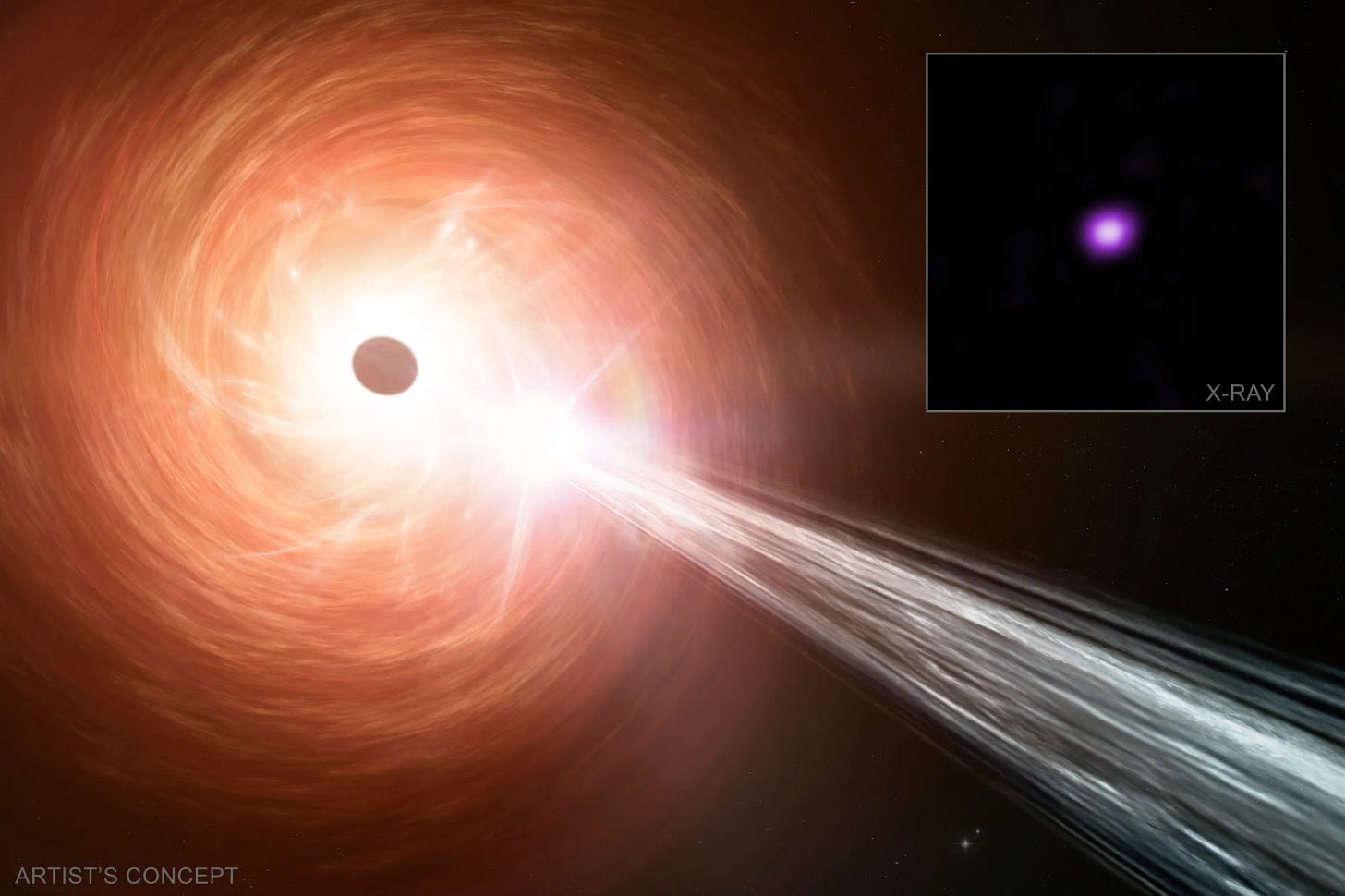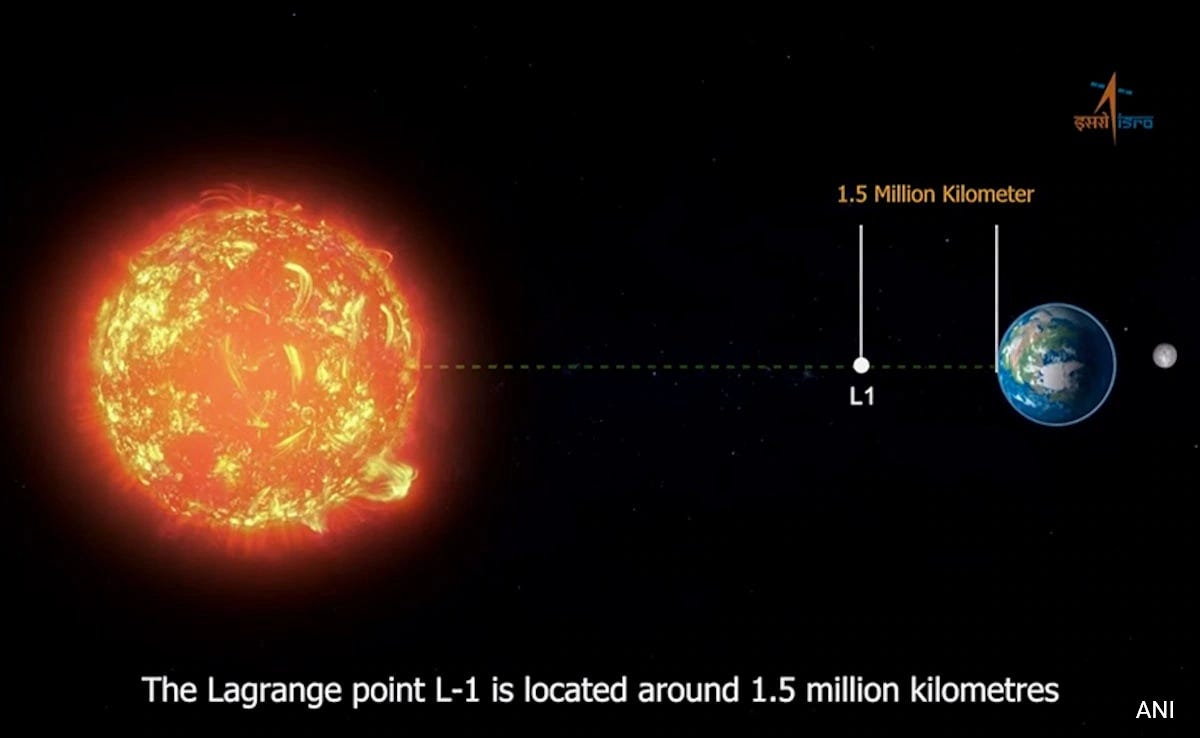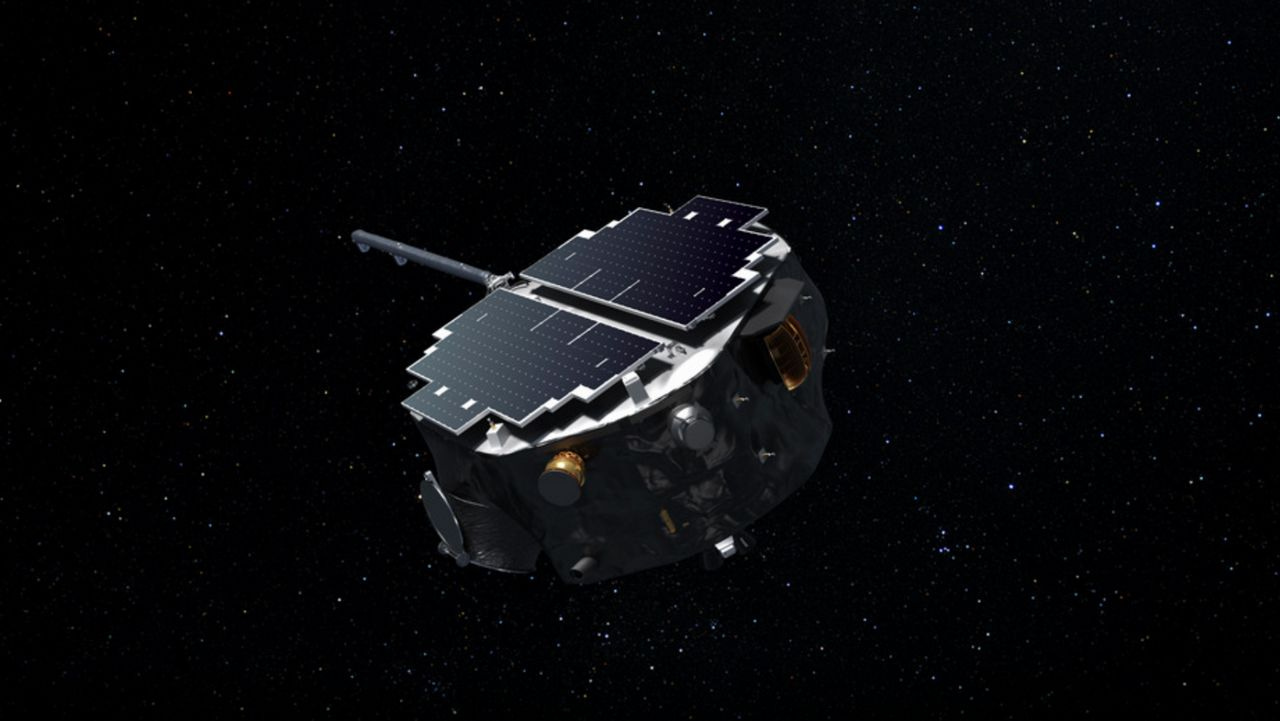Weekly - Bion-M No. 2 returns to Earth with live mice, flies and more
🟡 Weekly Space News - Quick and Easy.
Space Blaze is back… we went offline for a bit, but the orbit never stops!
Our Engagement Palette!
Check out our colour-coded system for our weekly space news:
🟤 Brown: For weeks that are mundane and bland.
🟡 Yellow: For fairly interesting weeks.
🟢 Green: For the most exciting weeks.
This Palette will help you decide if this week’s news is worth your time!
This week ranks yellow 🟡 on the Engagement Palette.
Scientists find one of the fastest growing black holes ever
Recently Scientists analysing data from NASA’s Chandra X-ray Observatory observed that a quasar named RACS J0320-35 was emitting an extremely large amount of X-rays; more than any other black-hole formed during its time. A quasar is the entire system of a black hole and the gas surrounding it. This shows that the black hole, located 12.8 billion light years from Earth is one of the fastest growing black holes ever discovered, consuming upto the mass of 3,000 suns a year.
Bion-M No. 2 returns to Earth with live mice, flies and more
Last week, Russia’s Bion-M No. 2 biosatellite carrying 75 mice, about 1,500 fruit flies, plant seeds and other organisms landed back on Earth after spending 30 days in orbit. The mission aimed to study the effects of microgravity on animals, the radiation safety of new spacecraft etc to develop better life support systems for human spaceflight. The spacecraft’s hull also contained embedded microbes to test if they could survive the heat of reentry. This was done to gain insight on weather life may have been introduced to Earth from outer space.
NASA’s IMAP launched to study space weather
Space weather consists of phenomena like Solar Flares (sudden bursts), Solar Wind (a stream of charged particles), CMEs (Large ejections of plasma) etc all originating from the sun. Such events can cause severe damage to infrastructure on Earth and satellites in orbit. This is why studying them and predicting them is important. Last week, NASA’s 2 IMAP space probes were successfully launched into space and on their way to the Lagrange Point 1 (similar to Aditya-L1) to study and predict such sace weather phenomena.





